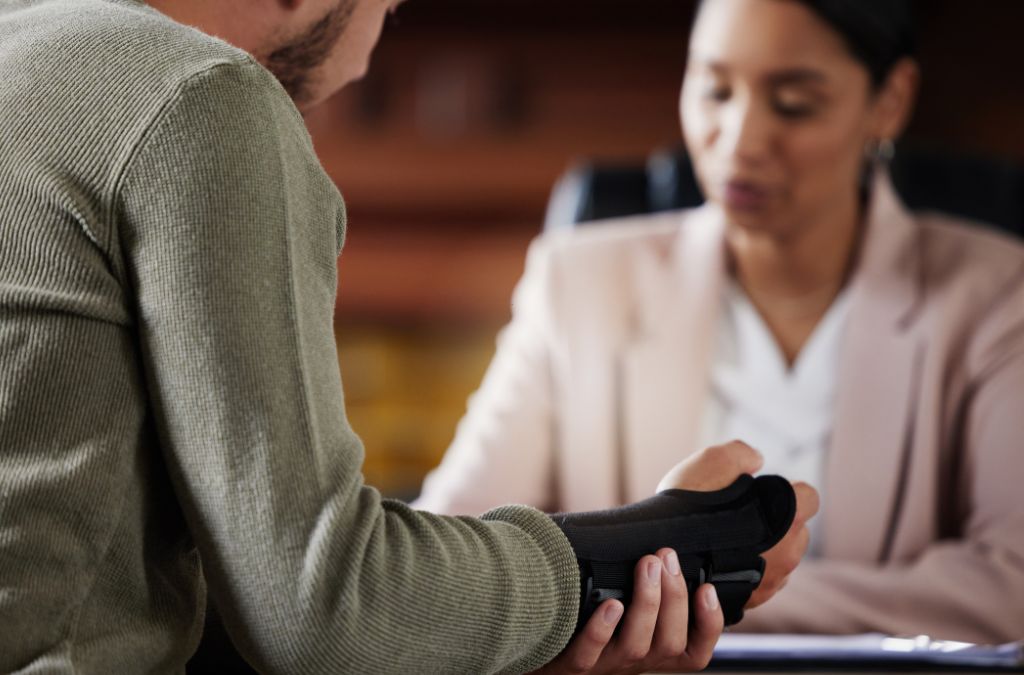
Working with a Personal Injury Lawyer
-
Table of Contents
The Process of Working with a Personal Injury Lawyer: What to Expect
Experiencing a personal injury can be a life-altering event, often accompanied by physical pain, emotional distress, and financial burdens. Navigating the legal landscape to seek compensation can be daunting. This is where a personal injury lawyer comes into play. Understanding the process of working with a personal injury lawyer can help alleviate some of the stress and uncertainty. This article outlines what to expect when engaging a personal injury lawyer, providing valuable insights and practical information.
Initial Consultation
The journey begins with an initial consultation. This meeting is typically free of charge and serves as an opportunity for both the lawyer and the potential client to assess the case.
- Case Evaluation: The lawyer will evaluate the details of the incident, including the nature of the injury, the circumstances surrounding it, and any evidence available.
- Client Questions: This is a chance for the client to ask questions about the legal process, the lawyer’s experience, and the potential outcomes of the case.
- Fee Structure: The lawyer will explain their fee structure, which often includes a contingency fee arrangement, meaning the lawyer only gets paid if the case is won.
Investigation and Evidence Gathering
Once the lawyer takes on the case, the next step involves a thorough investigation and gathering of evidence. This phase is critical for building a strong case.
- Collecting Evidence: The lawyer will gather medical records, police reports, witness statements, and any other relevant documentation.
- Expert Consultations: In some cases, the lawyer may consult with medical experts, accident reconstruction specialists, or other professionals to strengthen the case.
- Preserving Evidence: Ensuring that evidence is preserved and not tampered with is a key responsibility of the lawyer during this phase.
Filing the Claim
With the evidence in hand, the lawyer will proceed to file a claim. This involves several steps and requires meticulous attention to detail.
- Drafting the Complaint: The lawyer will draft a legal document known as a complaint, outlining the plaintiff’s case and the relief sought.
- Filing with the Court: The complaint is then filed with the appropriate court, officially initiating the lawsuit.
- Serving the Defendant: The defendant must be formally notified of the lawsuit through a process known as service of process.
Discovery Phase
The discovery phase is a pre-trial procedure where both parties exchange information and evidence. This phase can be lengthy and involves several key activities.
- Interrogatories: Written questions that each party must answer under oath.
- Depositions: Oral testimonies taken under oath, where lawyers from both sides question witnesses and parties involved.
- Document Requests: Requests for specific documents relevant to the case.
Negotiation and Settlement
Many personal injury cases are resolved through negotiation and settlement before reaching trial. This phase involves discussions between the plaintiff’s lawyer and the defendant’s legal team.
- Demand Letter: The lawyer may send a demand letter to the defendant, outlining the case and the compensation sought.
- Negotiation: Both parties will negotiate to reach a mutually agreeable settlement. This can involve several rounds of offers and counteroffers.
- Settlement Agreement: If an agreement is reached, a settlement agreement is drafted and signed by both parties, concluding the case.
Trial Preparation and Proceedings
If a settlement cannot be reached, the case proceeds to trial. This phase involves extensive preparation and the actual court proceedings.
- Pre-Trial Motions: Lawyers may file motions to resolve certain issues before trial, such as motions to dismiss or motions for summary judgment.
- Jury Selection: If the case is to be heard by a jury, the process of selecting jurors takes place.
- Trial: During the trial, both sides present their arguments, examine witnesses, and submit evidence. The judge or jury then deliberates and delivers a verdict.
Post-Trial Actions
After the trial, there may be additional steps depending on the outcome.
- Appeals: If either party is dissatisfied with the verdict, they may file an appeal to a higher court.
- Enforcement of Judgment: If the plaintiff wins, the lawyer will take steps to enforce the judgment and collect the awarded compensation.
Conclusion
Working with a personal injury lawyer involves several stages, from the initial consultation to potential post-trial actions. Each phase is designed to build a strong case and seek fair compensation for the injured party. Understanding this process can help clients feel more confident and informed as they navigate their personal injury claims.